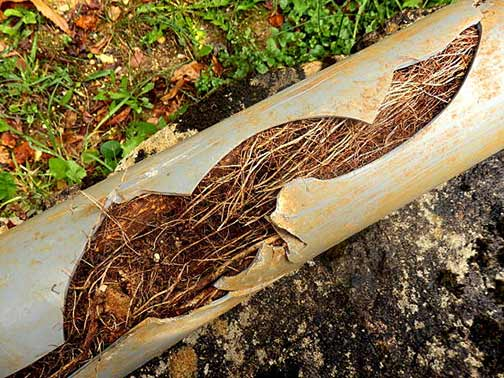
Tree roots are the most common natural cause of clogs and blockages in residential sewer lines. If there are trees near the location of your sewer line, the chances that their roots will interfere with the position and function of your sewer line can be as high as 50%, says Shannon Management Woodland team.
Tree roots don’t do this out of malicious intent against your sewer line. They are simply doing what tree roots do, which is to seek water, warmth, and nutrients from the closest sources. Sewer lines typically carry more water and nutrients inside them than the surrounding soil.
Tree roots can detect the presence of this water by sensing the unique heat signature of the nutrient-rich water in the pipes and also by picking up soil vibrations caused by the movements of the water. This causes the plant to bend its roots in the direction of your sewer line.
But just because there are trees and shrubs in the vicinity of your sewer line, it does not mean that their roots will invariably invade the pipes. The following factors play a big role in whether a sewer line is invaded by tree roots or not:
Trees and shrubs with aggressive or large root systems are more likely to intrude into sewer lines. This includes species like willow, elm, poplar, and certain varieties of the maple family.
The type of pipe material and the age of the pipes also play a role. Clay and concrete pipes are more susceptible to tree root invasion. Aging pipes are also vulnerable because they are often brittle.
Existing problems in the sewer line, like leaks and old, weak, or misaligned joints, also provide easy access points for plant roots to invade the sewer line.
Pipes of all sizes can be invaded by tree roots, but smaller pipes, due to their limited diameter, are more likely to suffer adverse consequences, like total blockages.
How can you tell if your sewer line has been invaded by tree roots, and is there a way to prevent this problem?
Detecting, solving, and preventing tree root intrusion in sewer lines
- Chronically slow-draining or clogged pipes
A sewer line clogged with tree roots will experience restricted water flow. The water inside the line will back up until it enters the home’s drainpipes, ultimately causing fixture drains to drain slowly. Plunging or snaking those drains will not solve the problem.
- Strange noises from your drains
Sewer lines that are clogged with tree roots will not permit the free flow of sewer gases, with the result that these gases may force their way out through your fixture drains. This is the cause of the strange noises from your drains.
- Foul odors in your home and yard
The same problem that causes sewer gases to exit through your drains also causes sewer gas odors inside your home. If the problem in the sewer line has resulted in a sewer line leak, you may smell sewer gases in your yard.
- Lush green or soggy patches in your lawn
If there are patches of oddly green grass in your lawn, your sewer line may be leaking as a result of the tree roots inside it. A leaky sewer line will also cause wet or soggy patches to appear in your lawn.
Steps to solve this problem
The signs of tree root invasion in a sewer line are the same as the signs of sewer line clogs and blockages from other causes. The only way to confirm if the problems in your sewer line are undeniably caused by tree roots is to do a sewer camera inspection.
- Sewer camera inspections: Let you check the physical condition of your sewer line and whether there is debris inside the pipes. This is done using specialized cameras that are inserted into the line. It is the most cost-effective method for diagnosing sewer line problems.
- Professional drain cleaning: If a sewer camera inspection shows that your sewer line is indeed clogged with tree roots, the next step is to remove them. This can be done using professional drain cleaning methods like hydro jetting or sewer rodding. These methods are capable of removing tree roots from an underground sewer line.
- Sewer line: But if the inspection result shows widespread damage to your sewer line as a result of the presence of tree roots inside the pipes, your best option is to repair the sewer line. You can do this using what is known as trenchless pipe repair.
To prevent a recurrence of the problem, you may use any of these methods:
- Remove the trees or tree roots: This is the most effective long-term solution, but some homeowners will view this step as extreme.
- Apply root killers: These will kill the tree roots inside your pipe, but they can also harm your trees. Some root killers are bad for the environment.
- Install tree root barriers: These are impermeable barriers installed between the trees and your sewer line to keep the two apart.
Lastly, to keep your sewer line in top condition and functioning optimally, it is vital to have the line professionally inspected and cleaned once a year. This will not only stop tree roots from growing inside the pipes, but it will also prevent other causes of sewer line clogs and blockages.

